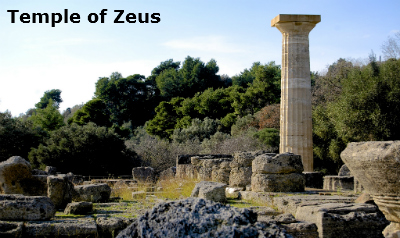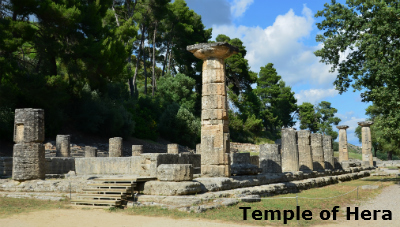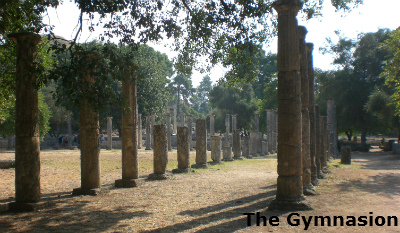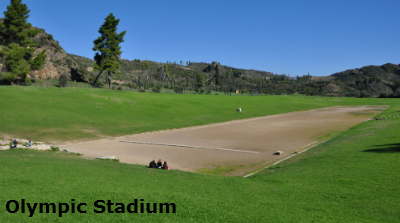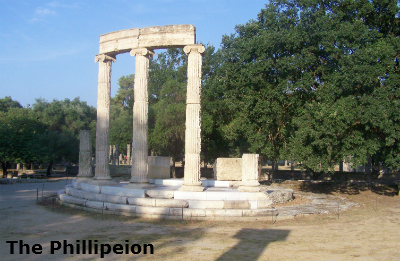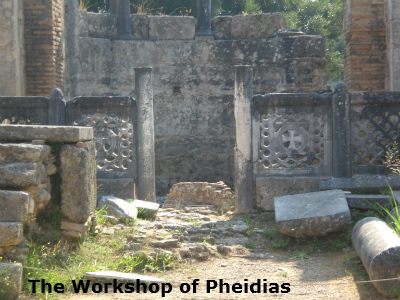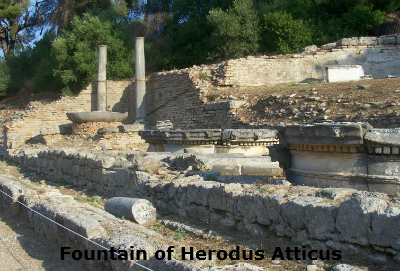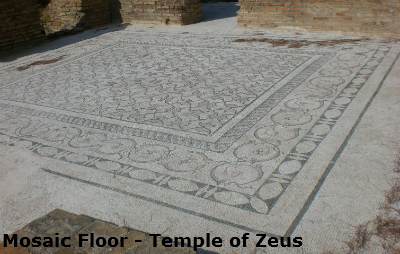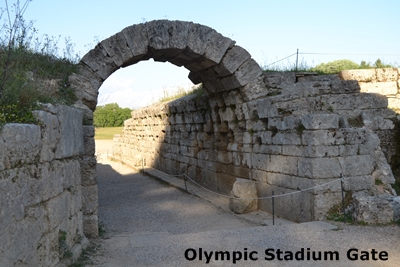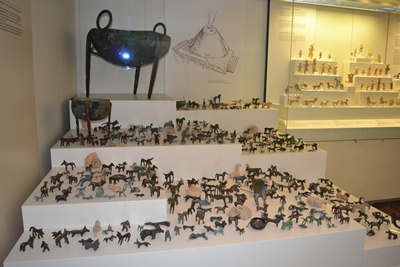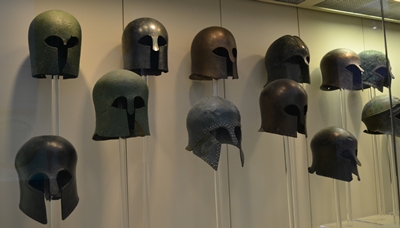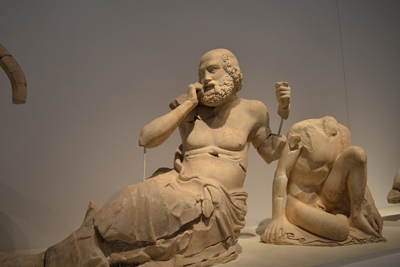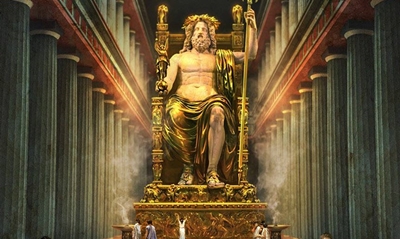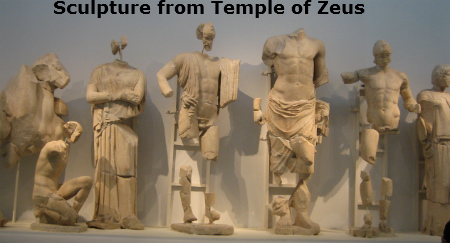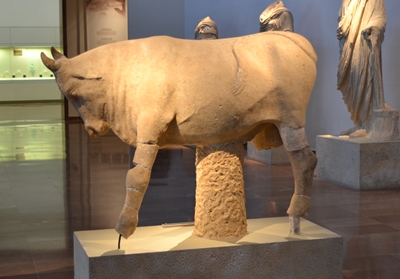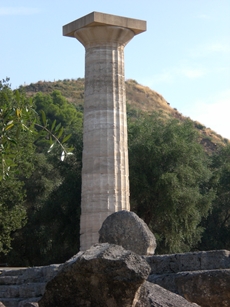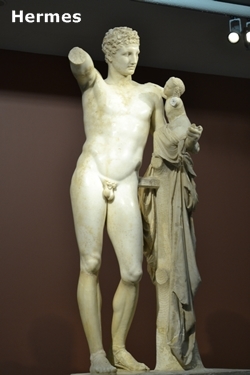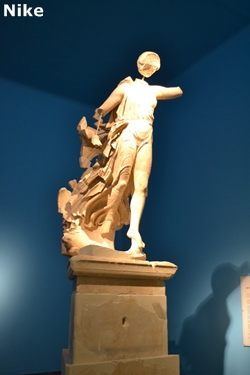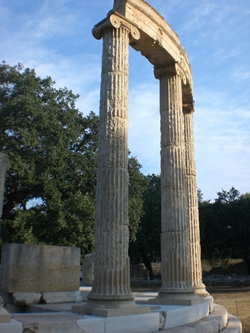To the north of the Temple of Zeus was the pelopion, a small, wooded hillock with an altar to Pelops. It was surrounded by a wall containing the remains of its Doric portico. Many artefacts now displayed in the museum were found on the hillock.
The foundations of the Philippeion, west of the Temple of Hera, are the remains of a circular construction with Ionic columns built by Philip of Macedon to commemorate the Battle of Chaironeia (338 BC), where he defeated a combined army of Athenians and Thebans. The building contained statues of Philip and his family.
Directly opposite the temple of Zeus, was the workshop of Pheidias where the great sculptor carved the huge statue of Zeus, listed as one of the Seven Wonders of the ancient world. The statue was probably transported in pieces and assembled inside the temple of Zeus.

